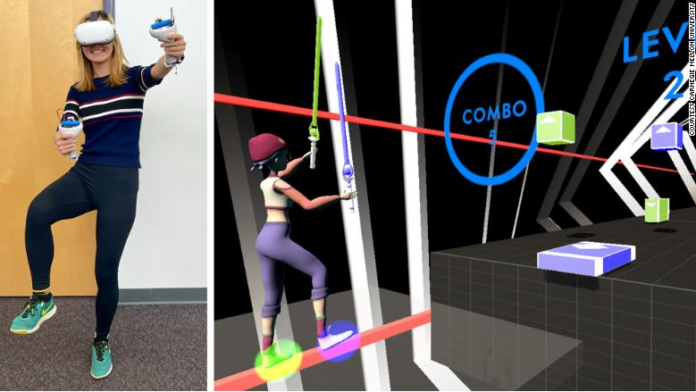Virtual Technology is becoming very common these days. You may have come across fancy VR settings at commercial places that offer truly animated entertainment. And if you have been provoked enough to have experienced VR, then depending on the app you used, you would have noticed missing legs. For a long time, the technology landscape of VR couldn’t figure out a way to track legs with existing headsets making you appear like a floating torso.
Now, a group of researchers from the Carnegie Mellon University (CMU) have come to find a possible solution for the ‘leg tracking issue’ in VR. According to the researchers, instead of installing additional sensors over the headset, the legs could be tracked using cameras at the rear of the Facebook’s parent Meta’s Quest 2 hand-held controllers.
What’s the challange?
Tracking your body is accomplished in VR through the use of sensors that are fixed on the primary VR device, the headset. The sensors could effectively study the position and movement of your body parts that are in proximity, say the upper portion. The lower body however seems to be off-limits the range of sensors and therefore remains untraceable.
As easy as it sounds, putting more sensors on or around your body isn’t a practical business solution to the leg tracking problem. Using more sensors would cost more and users don’t tend to buy the additional equipment that would come with the VR kit.
How new ‘Leg tracking’ prototype works?
The new VR prototype is named ‘ControllerPose’ and has been shown to prove that avatar legs become able to kick, stomp blocks, twist, and turn in the position as the user moves in the original, non-VR world. The demo shows that the users can now successfully kick the ball in a soccer game as well as defend a goal from incoming hockey pucks.
I think the legs are expressive. I think they are important to see how people are moving around — not just for locomotion but body pose for human-to-human interactions,
– Chris Harrison, associate professor CMU
All the tracking happens within the controllers. Two fisheye-lens cameras are used on each controller which are connected to a mini computer embedded as part of the controller equipment. These cameras capture a stream of images and feed them to the computer where a software processes the image to get rid of bad captures and improve the quality of existing ones. The information from clean images is then used to estimate the legs position with respect to the upper body position as sensed from the headset.
According to Harrison, the software would position the user’s body in the VR world with 6.98cm off the precision which is acceptable for game scenarios such as kicking a ball, squatting, or lifting a leg.
However, the challenge of ControllerPose is its massive power consumption by the Meta Quest 2 controllers. This means that batteries would be changed often leading to dissatisfying users. The ControllerPose team seems to take this challenge as their next step towards improving the prototype as well as working on making image processing more efficient. Harrison also revealed that they would experiment with sensor installation on Meta’s upcoming headset.


